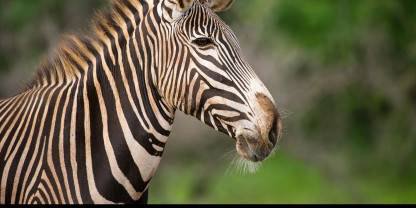- January: Excellent
- February: Excellent
- March: Good
- April: Poor
- May: Fair
- June: Excellent
- July: Excellent
- August: Excellent
- September: Excellent
- October: Good
- November: Fair
- December: Good
- Excellent
- Good
- Fair
- Poor
Meru National Park can be visited throughout the year, but wildlife viewing is best in the Dry season from June to October. Seeing wildlife is usually more difficult during the long rains (March to May) and the short rains (November to December), when animals (including elephants) disperse and migrate out of the park. During this time the grass also tends to be very high, making spotting animals more difficult.
27 Meru Safaris
-
Best Time
- June to October is best for general wildlife viewing (Little to no rainfall)
-
High Season
- December to March and July to October (The park never gets very busy)
-
Low Season
- April to June (Low-season rates might apply)
-
Best Weather
- June to September (Little to no rainfall)
-
Worst Weather
- April and November (Wettest months)
June to October Dry Season
- Days are sunny with little to no rain
- The grass is short and animals gather around water sources, making spotting easier
- The park never gets busy
- It is very hot and dry
- Airborne dust can reduce visibility
November to May Wet Season
- The park is close to empty and low-season rates might apply
- Skies are clear of dust, the park is green and there are lots of flowers
- There are many newborn animals
- Bird watching is excellent and are present
- Wildlife viewing is harder as the grass is long and animals disperse
- April and November can be very wet and some roads can become very bad after heavy rain
- Expect more mosquitoes and even tsetse flies
Wildlife Photos
Best Time To Go by Major Park
- Excellent
- Good
- Fair
- Poor
-
Amboseli National Park
- January: Excellent
- February: Excellent
- March: Good
- April: Fair
- May: Fair
- June: Excellent
- July: Excellent
- August: Excellent
- September: Excellent
- October: Excellent
- November: Fair
- December: Good
-
Buffalo Springs NR
- January: Excellent
- February: Excellent
- March: Good
- April: Fair
- May: Fair
- June: Excellent
- July: Excellent
- August: Excellent
- September: Excellent
- October: Good
- November: Fair
- December: Good
-
Lake Nakuru National Park
- January: Excellent
- February: Excellent
- March: Good
- April: Fair
- May: Fair
- June: Excellent
- July: Excellent
- August: Excellent
- September: Excellent
- October: Excellent
- November: Excellent
- December: Excellent
-
Masai Mara NR
- January: Good
- February: Good
- March: Fair
- April: Fair
- May: Good
- June: Excellent
- July: Excellent
- August: Excellent
- September: Excellent
- October: Excellent
- November: Fair
- December: Fair
-
Samburu National Reserve
- January: Excellent
- February: Excellent
- March: Good
- April: Fair
- May: Fair
- June: Excellent
- July: Excellent
- August: Excellent
- September: Excellent
- October: Good
- November: Fair
- December: Good
-
Tsavo East National Park
- January: Excellent
- February: Excellent
- March: Good
- April: Fair
- May: Fair
- June: Excellent
- July: Excellent
- August: Excellent
- September: Excellent
- October: Excellent
- November: Fair
- December: Good
-
Tsavo West National Park
- January: Excellent
- February: Excellent
- March: Good
- April: Fair
- May: Fair
- June: Excellent
- July: Excellent
- August: Excellent
- September: Excellent
- October: Excellent
- November: Fair
- December: Good



